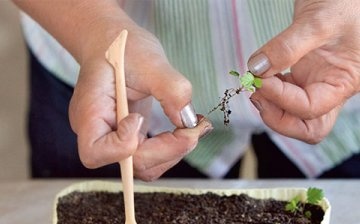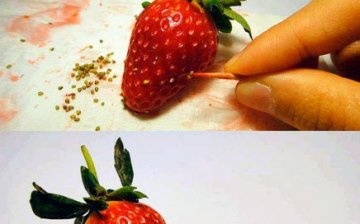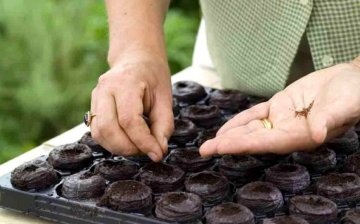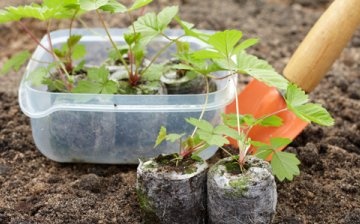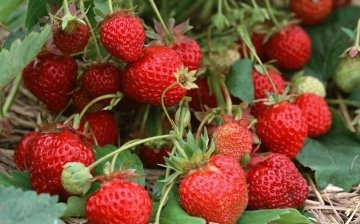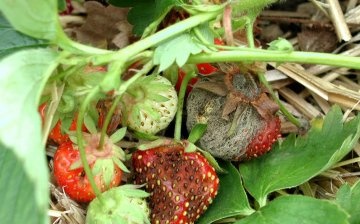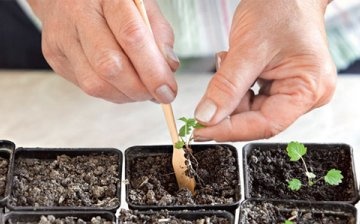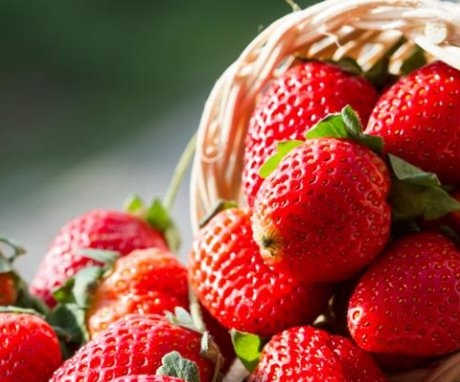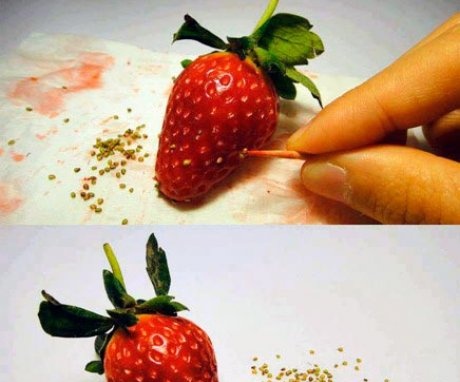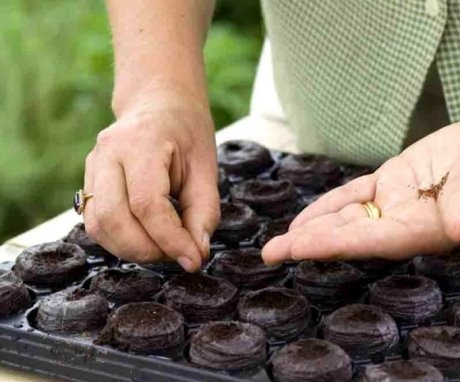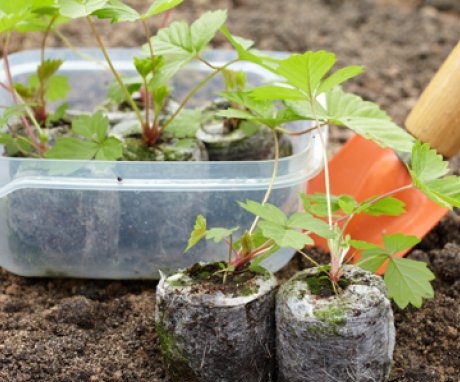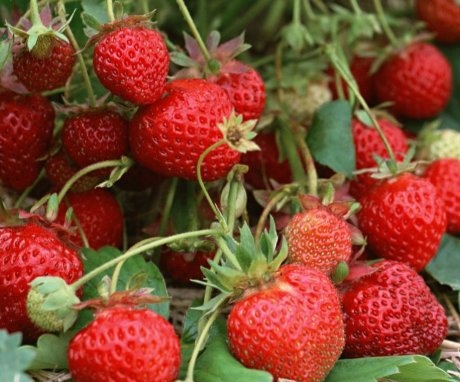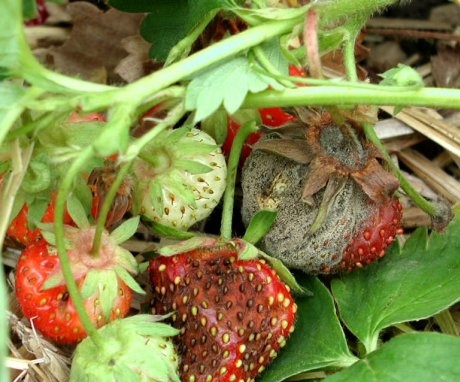The correct cultivation of strawberries from seeds at home
Growing strawberry from seeds is a rather painstaking and laborious task. However, having considered all the advantages of this method, more and more people want to collect beautiful and tasty berries at their site. Firstly, seeds can be stored much longer than seedlings. Secondly, they are highly resistant to diseases and pests. Thirdly, you can experiment with varieties, finding the most suitable option for yourself. Also, one cannot fail to mention the savings, because buying ready-made seedlings is much more expensive.
Content:
- The best varieties of strawberries
- Seed preparation
- Soil preparation and planting seeds
- Transplanting seedlings into the ground
- Strawberry care
- Protection from pests and diseases
The best varieties of strawberries
First you need to decide on the variety strawberry, but you can try to grow several at once. Each strawberry variety requires individual care, so before buying it is worth clarifying the following nuances:
- Select the strawberry variety that suits the soil on the site planned for planting.
- Pay attention to the resistance of the variety to frost, diseases and pests. The strongest and most resistant varieties include the following: "Festivalnaya", "Queen Elizabeth", "Mashenka", "Bogota", "Mount Everest", "Zarya".
- Purchase the flavor you want, which can range from sweet to sour. The sweet varieties are: "Queen Elizabeth"," Festivalnaya "," Mashenka ". The sour ones include:" Bogota "," Dawn "," Mount Everest ".
- In addition to the listed varieties are popular "Gigantella"," Fragola "," Regina "," Annapolis ", etc.
Among the huge variety of options, you can easily choose the option that suits you.
Seed preparation
If we talk about buying seeds, then it is worth doing it in proven places. But the ideal option is to harvest seeds yourself, because this is how you can choose those varieties that you like the most, evaluating its germination and yield.
To begin with, choose the most beautiful and largest berries.
After waiting for the berries to ripen completely, the top layer is removed from them and laid out to dry on gauze. After complete drying, the peel is separated from the seeds and packed in paper bags. In this form, seeds can be stored for up to several years.
How to properly prepare seeds for sowing:
- The seeds are spread on a damp cloth or cotton pad, covering the top with a second layer.
- The material is placed in a sealed container, in the lid of which several holes are made.
- The container must be kept in a warm room for 2 days.
- Next, the container is placed on the bottom shelf of the refrigerator, where it is kept for 2 weeks. It is important to keep the seeds moist and ventilated.
- On the eve of planting, the seeds are dried.
- Seeds are planted from late February to early March.
Soil preparation and planting seeds
The soil for growing strawberries should be light and crumbly, with neutral acidity. The composition may include the following components:
- A mixture of forest soil and river sand.
- A mixture of 3 parts of vermicompost, peat and river sand.
- A mixture of 2 parts turf and 1 part sand with peat.
As a top dressing, you can use ash and manure, or use mineral fertilizers... It is important to disinfect the soil before planting. It is calcined in an oven at a temperature of 180 to 220 degrees for 20 minutes. Also, the substrate can be steamed over boiling water for 30 minutes. The beneficial microflora of the disinfected soil is restored within 2 weeks of being in a cool place.
How to plant seeds correctly:
- The soil is placed in the container, which is tamped and sprayed with water from a spray bottle.
- Longitudinal grooves with a depth of 5 mm are made on the surface.
- The seeds are laid out in the grooves with tweezers. You do not need to sprinkle them with earth.
- Cover the container with a film, making holes in it.
- The container is stored at a temperature of 18 degrees.
Seedlings can be replanted when three leaves appear on the shoots. For transplant, disposable cups are used, at the bottom of which holes are made.
Drainage is placed at the bottom of the glass, which should consist of river sand, crushed stone, or crushed shells walnut... From above, the container is filled with soil, making a hole in the middle, into which warm water is poured. Seedlings the strawberries are transplanted with a toothpick, with lumps of soil on the roots. It is very important to do everything carefully and not to damage root system... The transplanted sprout is strengthened in the ground.
Transplanting seedlings into the ground
How to plant seedlings correctly strawberry in open ground:
- Since April, seedlings with strawberries are taken out to a cool place to harden the seedlings. The time is gradually increased to several hours, and after a week it is left overnight at a temperature of 5-7 degrees.
- The ideal time for planting strawberry seedlings in the ground is late May and early June. On some shoots, flowers already appear, which should be pinched off for better adaptation of the plant. The roots are best treated with a solution of salt and copper sulfate to prevent an attack pests.
- The planting site should be prepared in advance, providing a soil suitable for strawberries. The beds should not be in the lowlands, as the strawberries can suffer from drafts. Also, do not plant seedlings in an overly humid area where the groundwater level is closer than 70 cm from the soil surface.
Seedlings are planted in several ways:
- One-line planting, in which the beds are at a distance of 60-80 cm from each other, and the plants are planted every 25 cm.
- Two-line planting, in which the distance between the beds remains the same, and the plants are planted every 40 cm. If the bushes are weak, then the distance can be reduced.
When planting, the roots of the seedling should be vertical, and the apical bud should be on the surface of the ground. After planting, 500 ml of water is poured under each bush. After that, mulch with straw or sawdust... You can also use compost and humus.
For the best yield, it is recommended to plant one bed at a time for three years. Three-year-old strawberries are completely removed and a fresh batch of seedlings is planted in a garden bed located in a new location. With a successful combination of circumstances, strawberries can bear fruit already in the year of planting.
Strawberry care
To obtain a high yield, you need to know how to properly care for strawberries... Good care includes the following important points:
- Regular disposal of weeds.
- Weekly watering.
- Regular inspection of plantings for the presence of pests and diseases.
- Removal of diseased, damaged and dried leaves or bushes.
- Timely berry picking.
- Mulching bushes with sawdust to avoid berry rotting.
- Implementation feeding nsediment.
- With heavy rainfall, the strawberries are covered with a film, since excessive moisture harms both the plant and the crop.
- After the last harvest, the leaves and whiskers are trimmed, so the strawberries will more easily endure the winter.
Fertilizers are applied in spring and autumn. In the fall, feeding is very important, since during the summer period the strawberry bushes have become significantly depleted, and fertilizers will also help to endure the winter more easily. It is preferable to feed strawberries organic fertilizers, these include: manure, bird droppings, humus. If humus can be used when planting seedlings by placing it in holes, then bird droppings must be diluted many times to avoid damage to the root system.
In the spring, strawberries are fed after the first loosening of the soil.
You can use one part bird droppings and 20 parts water to water the soil between strawberry beds. Another top dressing can be done after the ovaries of the berries. You can use the diluted present mullein, as well as wood ash.
Protection from pests and diseases
The main pests and diseases that strawberry gardeners may encounter are:
- Ants that love to live in strawberry beds and eat berries. To combat them, vinegar is suitable, which must be poured into their habitat. Wood ash will also come to the rescue, which needs to be scattered around the bushes.
- Birds. To scare them away, you can use foil leaves attached to wooden bases, which are placed between the beds. You can also cover the strawberries with a covering material that will block access to the berries.
- Strawberry weevil that feeds on strawberry leaves. To combat it, it is necessary to spray the plants with a solution of water and mustard powder. A solution of wood ash and laundry soap will also help.
- Strawberry mite. To combat the pest, it is necessary to spill the strawberry bushes with very warm water. At the end of the season, the strawberry bushes should be trimmed and the fallen leaves should be disposed of.
- Strawberry leaf beetle. To combat the pest, you need to spray with broth wormwood... After that, loosen the soil to remove the larvae.
- Slugs. To combat them, traps are set with dark beer and mulch the ground around the bush with sawdust or needles.
- Gray rot. Strawberries should be treated with a copper oxychloride solution before flowering and after the last harvest. It is also necessary to get rid of all affected berries and bushes.
- Black rot. It is fought with the same methods as with gray rot.
- Powdery mildew... To combat the disease, spraying with a solution of potassium permanganate is carried out. All affected berries and plants are disposed of.
Growing strawberries is a rather troublesome task, but if you follow the rules for caring for a plant, then the work will certainly be rewarded with a juicy and tasty harvest.
More information can be found in the video:



